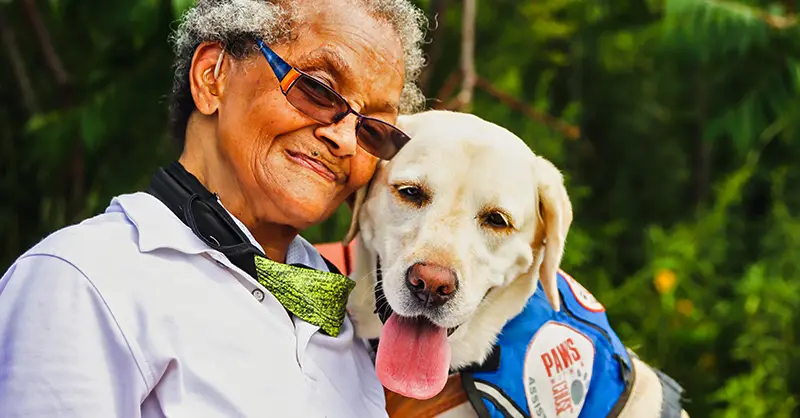All Our Articles on Disabilities

How to Get a Service Dog for Anxiety
Anxiety is the most common mental health condition in the U.S., with approximately 40 million adults experiencing the disorder. In cases where a person with... Read more

Service Dogs for Seniors
According to the most recent U.S. Census Bureau Data (2010), about 40.3 million people aged 65 and older live in the U.S, and the numbers... Read more

Hearing Dogs for the Deaf
Canines are very smart, even though their goofy grins and tail-wagging may distract from their intelligence. Service dogs, in particular, show their intelligence by performing... Read more

Can You Get a Service Dog for a Heart Condition?
Quite a few of us have had a dog steal our hearts, but did you know they can also save it? Dogs provide companionship and... Read more

Mobility Service Dogs Guide
Service dogs are more than a man’s best friend; they can be a man’s lifesaver. Mobility service dogs or mobility assistance dogs, in particular, save... Read more

Which Disabilities Qualify You for a Service Dog
There’s no doubt that modern treatments have come a long way in improving the quality of life for people with disabilities. Technology also offers new... Read more

Service Dogs for Autism: How Can They Help?
Service dogs can be trained to help individuals with physical or psychological disabilities. As the service dog holds the job to specifically assist their handlers,... Read more

How Do I Qualify For a Service Dog if I Have Anxiety and Depression?
For a person living with anxiety or depression, even the most trivial tasks can feel exhausting. To deal with their mental illness, some take medication... Read more

Disabilities that Qualify You for a Service Dog
To get a service dog, you must have an eligible physical, emotional, or mental health disability. The term “disability” has a specific meaning under the... Read more

